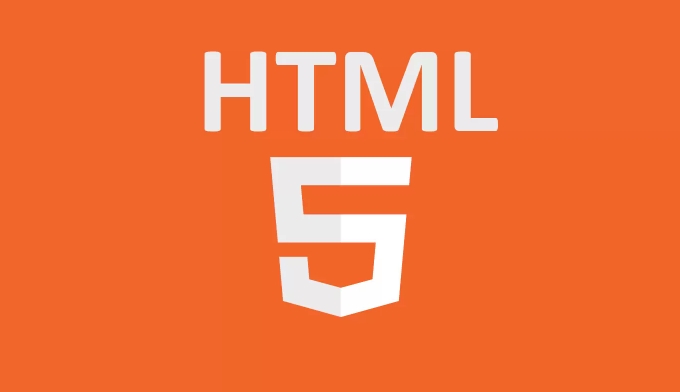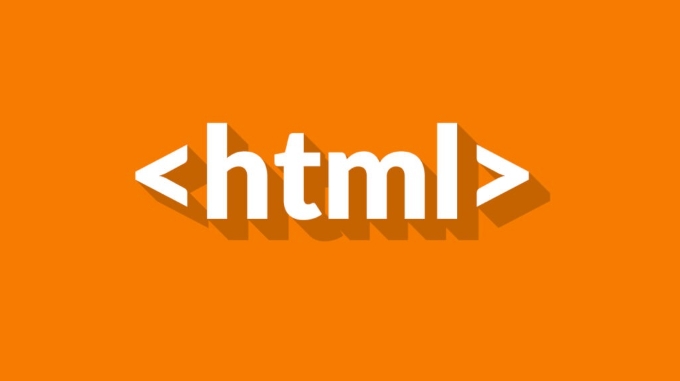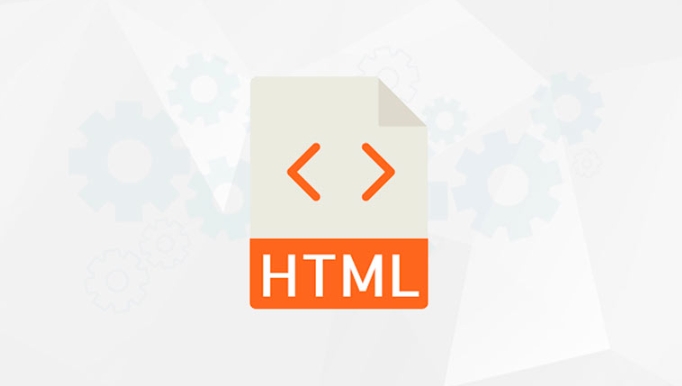HTML5 Microdata is a structured data method that labels web page content through specific attributes, which is used to improve search engines' understanding and display of specific information on the page. It uses item scope, item type, itemprop and other attributes to describe specific content such as products, characters, events, etc., and is supported by mainstream search engines. Common uses include enriching search results, enhancing semantic recognition, and improving cross-platform compatibility. Key points of using Microdata include: 1. Use Schema.org standard vocabulary; 2. Keep the structure clear and reasonable nested; 3. Avoid duplication or mislabeling; 4. Use tools to test effectiveness.

HTML5 Microdata is a way to embed structured data in web pages, helping search engines and browsers better understand page content. It does not just describe the page itself like traditional metadata, but is used to describe the specific content in the page, such as products, people, events, etc.

Simply put: Microdata lets the machine "understand" your web content.
What is HTML5 Microdata?
Microdata is part of HTML5, and marks structured information in web pages through a set of specific properties (such as itemscope , itemtype , itemprop ).

For example, if you want to tell search engines that this is a recipe page, you can write it like this:
<div itemscope itemtype="http://schema.org/Recipe"> <h1 itemprop="name">Scrambled eggs with tomato</h1> <p>Time required: <span itemprop="totalTime">20 minutes</span></p> </div>
Not only can people understand this code, but search engines can also recognize this as a recipe and extract the key information.

Why use Microdata?
The biggest function of Microdata is to improve the display effect of web pages on search engine results pages (SERPs), bringing better click-through rates and visibility.
Common uses include:
- Enrich search results : Let search engines display additional information such as star ratings, prices, pictures, etc.
- Semantic enhancement : Helps crawlers understand the actual meaning of page content, rather than just looking at keyword piles.
- Cross-platform compatibility : supported by mainstream search engines such as Google and Bing, and compatible with the Schema.org standard.
If you want your website content to stand out when searching, Microdata is a practical tool.
How to use Microdata correctly?
Although it doesn't seem complicated, there are still several key points to pay attention to in order to really use Microdata well:
1. Use the correct vocabulary (Vocabulary)
It is recommended to use the standard vocabulary provided by Schema.org , which covers common content types such as articles, products, organizations, events, etc.
2. Clear structure and reasonable nesting
An itemscope represents an entity, itemtype indicates the type of this entity, and itemprop is the property of this entity.
3. Avoid duplicate or error marking
Don't mix multiple irrelevant entities together, and don't add Microdata to non-related content, otherwise it may mislead search engines.
4. Test your Microdata
You can use Google's Rich Results Test to verify that your structured data is valid.
Basically that's it. Microdata is not complicated, but it is really useful in SEO and content discoverability. If you are working on a content website or e-commerce site, spend some time adding Microdata, it may have unexpected results.
The above is the detailed content of What are HTML5 Microdata and why use them?. For more information, please follow other related articles on the PHP Chinese website!

Hot AI Tools

Undress AI Tool
Undress images for free

Undresser.AI Undress
AI-powered app for creating realistic nude photos

AI Clothes Remover
Online AI tool for removing clothes from photos.

Clothoff.io
AI clothes remover

Video Face Swap
Swap faces in any video effortlessly with our completely free AI face swap tool!

Hot Article

Hot Tools

Notepad++7.3.1
Easy-to-use and free code editor

SublimeText3 Chinese version
Chinese version, very easy to use

Zend Studio 13.0.1
Powerful PHP integrated development environment

Dreamweaver CS6
Visual web development tools

SublimeText3 Mac version
God-level code editing software (SublimeText3)

Hot Topics
 Audio and Video: HTML5 VS Youtube Embedding
Jun 19, 2025 am 12:51 AM
Audio and Video: HTML5 VS Youtube Embedding
Jun 19, 2025 am 12:51 AM
HTML5isbetterforcontrolandcustomization,whileYouTubeisbetterforeaseandperformance.1)HTML5allowsfortailoreduserexperiencesbutrequiresmanagingcodecsandcompatibility.2)YouTubeofferssimpleembeddingwithoptimizedperformancebutlimitscontroloverappearanceand
 Adding drag and drop functionality using the HTML5 Drag and Drop API.
Jul 05, 2025 am 02:43 AM
Adding drag and drop functionality using the HTML5 Drag and Drop API.
Jul 05, 2025 am 02:43 AM
The way to add drag and drop functionality to a web page is to use HTML5's DragandDrop API, which is natively supported without additional libraries. The specific steps are as follows: 1. Set the element draggable="true" to enable drag; 2. Listen to dragstart, dragover, drop and dragend events; 3. Set data in dragstart, block default behavior in dragover, and handle logic in drop. In addition, element movement can be achieved through appendChild and file upload can be achieved through e.dataTransfer.files. Note: preventDefault must be called
 Audio and Video: can i record it?
Jun 14, 2025 am 12:15 AM
Audio and Video: can i record it?
Jun 14, 2025 am 12:15 AM
Yes,youcanrecordaudioandvideo.Here'show:1)Foraudio,useasoundcheckscripttofindthequietestspotandtestlevels.2)Forvideo,useOpenCVtomonitorbrightnessandadjustlighting.3)Torecordbothsimultaneously,usethreadinginPythonforsynchronization,oroptforuser-friend
 Adding Audio and Video to HTML: Best Practices and Examples
Jun 13, 2025 am 12:01 AM
Adding Audio and Video to HTML: Best Practices and Examples
Jun 13, 2025 am 12:01 AM
Use and elements to add audio and video to HTML. 1) Use elements to embed audio, make sure to include controls attributes and alternate text. 2) Use elements to embed video, set width and height attributes, and provide multiple video sources to ensure compatibility. 3) Add subtitles to improve accessibility. 4) Optimize performance through adaptive bit rate streaming and delayed loading. 5) Avoid automatic playback unless muted, ensuring user control and a clear interface.
 What is the purpose of the input type='range'?
Jun 23, 2025 am 12:17 AM
What is the purpose of the input type='range'?
Jun 23, 2025 am 12:17 AM
inputtype="range" is used to create a slider control, allowing the user to select a value from a predefined range. 1. It is mainly suitable for scenes where values ??need to be selected intuitively, such as adjusting volume, brightness or scoring systems; 2. The basic structure includes min, max and step attributes, which set the minimum value, maximum value and step size respectively; 3. This value can be obtained and used in real time through JavaScript to improve the interactive experience; 4. It is recommended to display the current value and pay attention to accessibility and browser compatibility issues when using it.
 How can you animate an SVG with CSS?
Jun 30, 2025 am 02:06 AM
How can you animate an SVG with CSS?
Jun 30, 2025 am 02:06 AM
AnimatingSVGwithCSSispossibleusingkeyframesforbasicanimationsandtransitionsforinteractiveeffects.1.Use@keyframestodefineanimationstagesforpropertieslikescale,opacity,andcolor.2.ApplytheanimationtoSVGelementssuchas,,orviaCSSclasses.3.Forhoverorstate-b
 HTML audio and video: Examples
Jun 19, 2025 am 12:54 AM
HTML audio and video: Examples
Jun 19, 2025 am 12:54 AM
Audio and video elements in HTML can improve the dynamics and user experience of web pages. 1. Embed audio files using elements and realize automatic and loop playback of background music through autoplay and loop properties. 2. Use elements to embed video files, set width and height and controls properties, and provide multiple formats to ensure browser compatibility.
 What is WebRTC and what are its main use cases?
Jun 24, 2025 am 12:47 AM
What is WebRTC and what are its main use cases?
Jun 24, 2025 am 12:47 AM
WebRTC is a free, open source technology that supports real-time communication between browsers and devices. It realizes audio and video capture, encoding and point-to-point transmission through built-in API, without plug-ins. Its working principle includes: 1. The browser captures audio and video input; 2. The data is encoded and transmitted directly to another browser through a security protocol; 3. The signaling server assists in the initial connection but does not participate in media transmission; 4. The connection is established to achieve low-latency direct communication. The main application scenarios are: 1. Video conferencing (such as GoogleMeet, Jitsi); 2. Customer service voice/video chat; 3. Online games and collaborative applications; 4. IoT and real-time monitoring. Its advantages are cross-platform compatibility, no download required, default encryption and low latency, suitable for point-to-point communication






